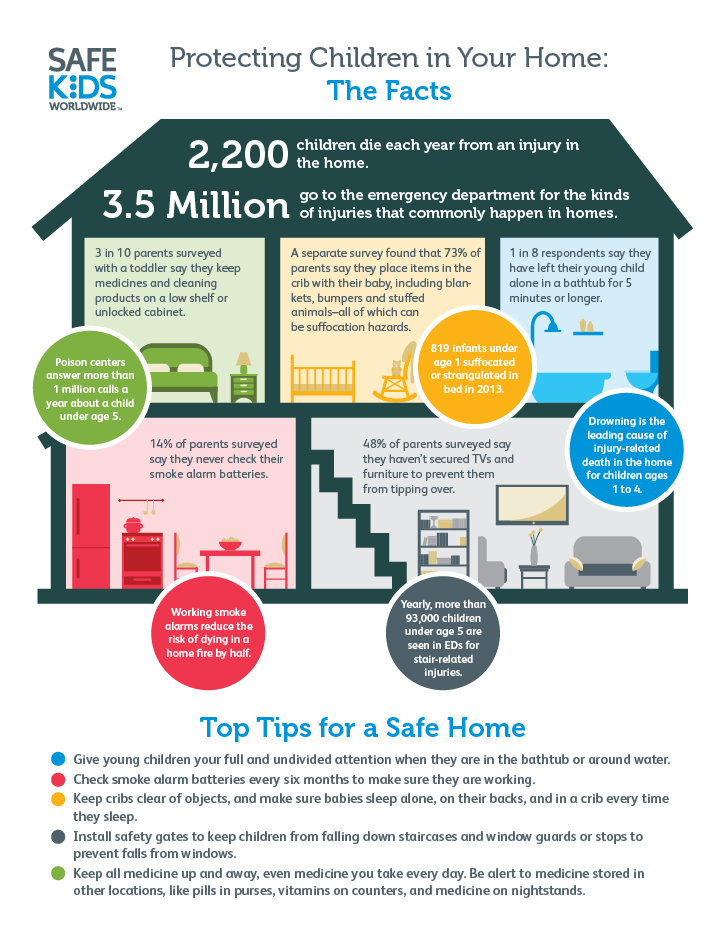How do you keep children safe and protected?
Summary of the Article: How to Keep Children Safe and Protected
What do we need to protect children from
Every child has the right to live free from violence, exploitation, and abuse. It happens in every country, even in places where children should be most protected – their homes, schools, and online.
What are examples of child safety
Keep the lid closed and secured with a latch when not in use. Use window guards to prevent your child from tumbling out a window. Keep all household cleaners, laundry pods, and pills locked up and put away. Keep children away from exercise equipment and rooms with heavy-duty appliances such as treadmills.
What do children need to feel safe and secure
Kids feel safe when their environment is structured and they know what is happening next. This is most important when they are stressed or overwhelmed. Maintaining mealtimes and bedtimes and keeping rules and limits consistent is important in helping kids feel safe.
How do you empower children to keep themselves safe
Talk to your kids. Encourage your children to feel comfortable telling you anything, especially if it involves another adult. Be aware. Empower your kids. Teach them their rights. Notice changes in behavior. Practice safety skills. Cybersafety is important too.
What do parents do to protect their child
As a parent, you should take an active interest in your children and listen to them. Teach your children that they can be assertive to protect themselves against abduction and exploitation. And most importantly, make your home a place of trust and support that fulfills your child’s needs.
What are the 5 P’s of child protection
The 5 P’s of child protection are: Prevention, Paramountcy, Partnership, Protection, and Parental Responsibility. Make your child aware of these P’s for any awkward situation they don’t understand.
What is safety simple for kids
Safety is anything that people do to protect themselves or others from harmful accidents. People can prevent accidents by following safety measures. Safety measures involve knowing when an accident might take place and then taking steps to keep it from happening.
What are 10 safety rules at home for kids
13 Safety Rules for Children at Home:
– Always keep doors and windows closed.
– Stay away from electricity.
– Eat slowly.
– Be gentle with pets.
– Stay away from hazardous materials.
– Be careful when playing outdoors.
– Don’t climb on furniture.
– Don’t get into closed spaces.
What are 3 things that make you feel safe
Taking part in social events or group exercise or even going for a walk can add to your feeling of stability. Being surrounded by people you trust and having supportive friends and family are all strongly linked to wellbeing. Having healthy and respectful relationships can help you feel safe and valued.
What can you teach children to help protect themselves
Key takeaways:
– Talk about personal safety early, often, and clearly.
– Keep an open dialogue running with your child about “safe” and “unsafe” people and situations.
– Role-play scenarios with your child, like unwanted attention from a stranger.
What are the 5 body safety rules

What do we need to protect children from
Every child has the right to live free from violence, exploitation and abuse. Children experience insidious forms of violence, exploitation and abuse. It happens in every country, and in the places children should be most protected – their homes, schools and online.
Cached
What are examples of child safety
Keep the lid closed and secured with a latch when not in use. Use window guards to prevent your child from tumbling out a window. Keep all household cleaners, laundry pods and pills locked up and put away. Keep children away from exercise equipment and rooms with heavy duty appliances such as treadmills.
What do children need to feel safe and secure
Kids feel safe when their environment is structured and they know what is happening next. This is most important when they are feeling stressed or overwhelmed. Maintaining mealtimes and bedtimes and keeping rules and limits consistent is important in helping kids feel safe.
How do you empower children to keep themselves safe
Other helpful adviceTalk to your kids. Encourage your children to feel comfortable telling you anything, especially if it involves another adult.Be aware.Empower your kids.Teach them their rights.Notice changes in behaviour.Practice safety skills.Cybersafety is important too.
What do parents do to protect their child
As a parent, you should take an active interest in your children and listen to them. Teach your children that they can be assertive in order to protect themselves against abduction and exploitation. And most importantly, make your home a place of trust and support that fulfills your child's needs.
What are the 5 P’s of child protection
The 5 P's of child protection are: Prevention, Paramountcy, Partnership, Protection and Parental Responsibility. Make your child aware of these P's for an awkward situation they don't understand.
What is safety simple for kids
Safety is anything that people do to protect themselves or others from harmful accidents. People can prevent accidents by following safety measures. Safety measures involve knowing when an accident might take place and then taking steps to keep it from happening.
What are 10 safety rules at home for kids
13 Safety Rules for Children at Home: A Complete Guide ForAlways keep doors and windows closed.Stay away from electricity.Eat slowly.Be gentle with pets.Stay away from hazardous materials.Be careful when playing outdoors.Don't climb on furniture.Don't get into closed spaces.
What are 3 things that make you feel safe
Taking part in social events or group exercise or even going for a walk can add to your feeling of stability. Being surrounded by people you trust and having supportive friends and family are all strongly linked with wellbeing. Having healthy and respectful relationships can help you to feel safe and valued.
What can you teach children to help protect themselves
Key takeawaysTalk about personal safety early, often, and clearly.Keep an open dialogue running with your child about “safe” and “unsafe” people and situations.Role-play scenarios with your child, like unwanted attention from a stranger.
What are the 5 body safety rules
5 Body Safety RulesIt's MY Body. I am special and my body belongs to me.Ask an Adult if I am Safe. If I am unsure or feel uncomfortable about a situation, I can ask an adult if I am safe and they will help me.Say “No” and “Get Away!”Tell A Parent or Safe Adult!It's Never My Fault!
What is an example of protective parents
Checking In With a Child Multiple Times When They're Out With Friends. It's normal to check in on your child occasionally. But overprotective parents often call, text, or email their children incessantly. If they can't get a hold of their child, they may contact their child's friends or friends' parents.
How can I be a safe parent
Build confidence in your child. Challenge them to go beyond what they think they're able to do. Set boundaries. Own your emotions and let them experience theirs.
What are the 4 principle of child protection
Underlying principles and standards
Core principles include: the child's survival and development, best interests of the child, non-discrimination, children's participation.
What are the three R’s of child personal safety
The "three R's" of Youth Protection convey a simple message for the personal awareness of our youth members: Recognize that anyone could be a molester; Respond when someone is doing something that goes against your gut or against the safety guidelines; and Report attempted or actual molestation or any activity that you …
What are 10 safety rules for kids
10 Safety Rules For Kids1: Don't talk to Strangers.2: Cross the Street with Adult Supervision.3: Never Play with Fire.4: Be Safety Conscious While Going to School.5: Be Safety at Home.6: Be Safety Smart While Doing Chores.7: Play Safety.8: Safety on the Road.
What are 5 basic safety rules
Basic Safety RulesAlways wear your seatbelt when in a vehicle or heavy equipment.Always inspect equipment and tools.Always use fall protection when working at heights.Stay of out the blind spots of heavy equipment.Never put yourself in the line of fire.Utilize proper housekeeping measures to keep work areas clean.
What are 5 personal safety rules
Street PrecautionsBe alert to your surroundings and the people around you—especially if you are alone or it is dark.Whenever possible, travel with a friend.Stay in well-lighted areas as much as possible.Walk close to the curb.Walk confidently at a steady pace.Make eye contact with people when walking.
What are some ways to stay safe
10 Ways to Keep Your Family SafeBuckle up. In the event of a car accident, this simple act can mean the difference between life and death.Use child safety seats.Don't drink and drive.Wear a helmet.Prevent falls.Watch those windows.Prevent poisoning.Be watchful near water.
What are the five ways of keeping yourself safe at home
Safety Rules At Home For That Needs To Be Implemented To Make It Safer For EveryoneRule 1: Always Keep The Doors Locked.Rule 2: Always Keep The Doors Closed.Rule 3: Keep Medicine In Safe Cabinets.Rule 4: Keep The Floor Dry At All Times.Rule 5: Always Have An Emergency Plan.Rule 6: Ensure That Alarm Systems Are Working.
What are the three ways to protect children
It then details 10 practical suggestions how to protect children:Detect, identify and refer children who need protection.Appoint a guardian.Hear the child.Assess the child's best interests.Coordinate all actors within Member States.Address protection needs.Establish jurisdiction and transnational cooperation.
What are the 7 steps to safety
The seven steps to safety are:Step 1: Make Your Place Safe.Step 2: Cool Tools for Family Rules.Step 3: Feel Safe with People.Step 4: What's Special about Our FamilyStep 5: Emergency.Step 6: Ready YetStep 7: Make a Care Plan.
What are the three golden rules of safety
Always follow the traffic rules, wear your seat belt, keep within speed limits, and do not use hand held phones while driving. Pedestrians must always stand clear of mobile equipment.
What are the five protective factors of be strong families
Five Protective Factors are the foundation of the Strengthening Families Approach: parental resilience, social connections, concrete support in times of need, knowledge of parenting and child development, and social and emotional competence of children.
How parents should protect their child
As a parent, you should take an active interest in your children and listen to them. Teach your children that they can be assertive in order to protect themselves against abduction and exploitation. And most importantly, make your home a place of trust and support that fulfills your child's needs.



